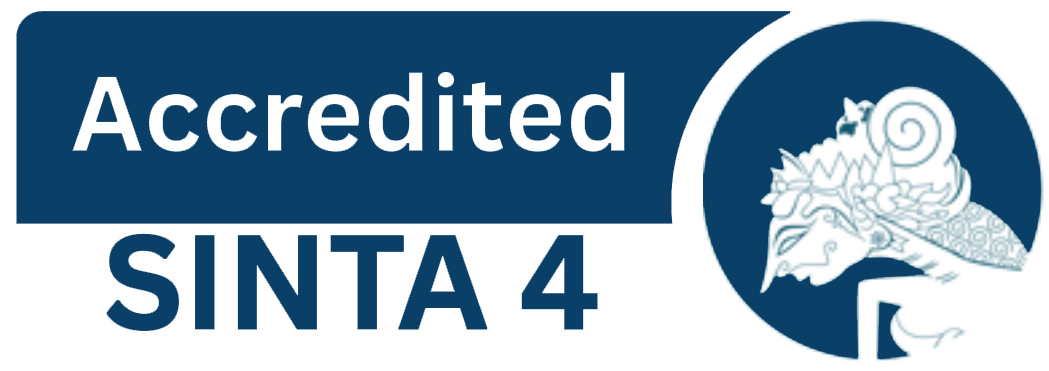Pengaruh Penggunaan Model Pembelajaran Musik Euritmik terhadap Perkembangan Motorik Kasar Anak Down Syndrome
DOI:
https://doi.org/10.22460/collase.v5i5.12233Kata Kunci:
, Eurythmic, Gross Motor, Down SyndromeAbstrak
Abstract
Â
This study aims to determine the effectiveness of the eurythmic music learning model on the gross motor development of children with Down syndrome at SLB Negeri Ciamis. The approach used is Single Subject Research (SSR) with A-B-A' design. The subject under study is a child with Down syndrome who has weak motor control but has an interest in music. Data was collected by means of a test based on the stages of eurythmic learning, namely imitating and responding to rhythm through body movements based on slow, medium and fast tempo songs. The data obtained were analyzed through descriptive statistics displayed in line graphs. The components analyzed are the analysis under conditions and between conditions. Based on the results of the study, it was shown that there was an increase in the use of the eurythmic learning model on gross motor development in imitating and responding to tone. There is a score in the baseline-1 phase (A) there are 3 sessions with a frequency of 59,59,59. In the intervention phase (B) there were 5 sessions with a score of 61, 65. 68, 76,76. While in the Baseline-2 phase, there were 3 sessions with an achievement score of 77, 79, 80. According to the data, it is known that this learning model has a positive effect. It can be shown in the level change of 0% in the baseline-1 phase, 14% in the intervention phase and 3% in the baseline-2 phase. According to the data that has been obtained, the overall use of the eurythmic music learning model is effective for the gross motor development of children with Down syndrome.
Â
Keywords: Eurythmic, Gross Motor, Down Syndrome
Â
Referensi
Ardimen. (2016). Pengembangan Multiple Intelligence melalui Pembalajaran Integratif Berbasis Games. Jurnal Edukasi: Vol. 2 (2) Juli 2016
Elisabeth, M.P. (2016). Pengaruh Pembelajaran Musik dengan Instrumen Keyboard terhadap Kemampuan Komunikasi Anak Down Syndrome dengan Variabel Mediator Kemampuan Mengolah Pendengaran. (Disertasi). Program Pascasarjana. Universitas Airlangga, Semarang
Kuroyanagi. (2007). Totto Chan gadis Ciliki di Jendela. Jakarta: PT Gramedia Pustaka Utama
Kusumawati. (2013). Penanganan Kognitif Anak Down Syndrone Melalui Metode Kartu Warna di TK Permata Bunda Surakarta. (Thesis). Universitas Muhammadiyah Surakarta
Pamadhi, H. dkk. (2019). Pendidikan Seni di SD. Tangerang Selatan: Universitas Terbuka
Renawati, dkk. (2017). Interaksi Sosial Anak Down Syndrome dengan Linkungan Sosial (Studi Kasus Anak Down Syndrome yang Bersekolah di SLB Pusppa Suryakanti Bandung. Jurnal Penelitian & PKM. Vol 4, No.2
Respati, R. (2015). Esensi Pendidikan Musik untuk Anak. Journal Saung Guru. Vol VII No. 2
Respati, R & Fuadah, U. (2018). Pembelajaran Ansabel Musik Untuk Siswa Kelas Tinggi Sekolah dasar. Indonesian Journal of Primary education. Vol:, No. 1
Ridho. (2015). Mempertimbangkan Euritmika Emile Jaques-Dalcroze pada Pengajaran Seni Musik Anak Usia Dini. Jurnal Ta’allum. Vol.03, No.01
Serani, G. (2019). Euretmika Dalcroze Dan Relevansinya Bagi Pengembangan Kecerdasan Musikal Anak Di PAUD. Dunia Anak: Jurnal Pendidikan Anak Usia Dini, 2(2). Doi: https://doi.org/https://doi.org/10.31 932/jpaud.v2i2.766
Stefanini S, dkk. (2009). The link between gesture and speech in children with down syndrome. Down Syndrome Research and Practice: Vol. 12 Issue 3 hlm. 173.
Sujiono, B. (2007). Metode Pengembangan Fisik (Edisi Revisi). Jakarta: Universitas Terbuka.
Undang-Undang Dasar Nomor 20 tahun 2003 tentang Sistem Pendidikan Nasional



